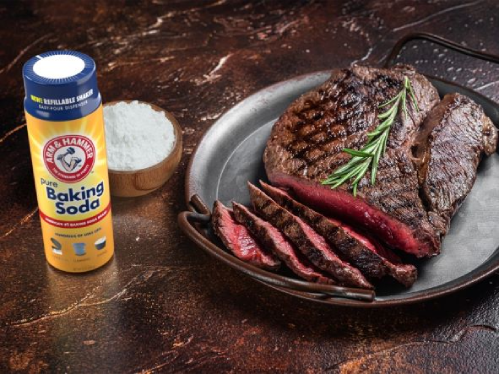Imagine transforming a tough, chewy piece of meat into a mouthwatering delight that melts in your mouth. As you plan your next meal, you might wonder how to achieve those restaurant-quality results at home.
Here’s where meat tenderizers come into play. You can elevate your cooking game with this simple yet powerful tool, ensuring every dish is memorable and delicious. Are you ready to discover how meat tenderizers can revolutionize your culinary creations? Whether you’re a seasoned chef or just starting out, understanding the magic behind meat tenderizers could be your secret weapon in the kitchen.
Dive into the world of meat tenderizers and uncover the techniques that will make your dishes irresistible. Your taste buds will thank you, and your dinner guests will beg for seconds.
What Are Meat Tenderizers?
Meat tenderizers make meat soft. They help in cooking. There are two types. Chemical and Mechanical tenderizers. They work differently.
Types Of Meat Tenderizers
Chemical tenderizers use enzymes. They break down meat fibers. This makes meat easier to chew. Mechanical tenderizers use tools. These tools are like hammers. They pound meat to soften it.
Both methods have benefits. Chemical tenderizers are easy to use. Mechanical ones give control over texture. Choose the right type for your dish. This improves your cooking results.

Credit: www.amazon.com
How Tenderizers Work
Meat tenderizers help by breaking down proteins in the meat. Proteins are long chains. Tenderizers cut these chains. This makes the meat softer and easier to chew. Enzymes in tenderizers do the job. They are called proteolytic enzymes. These enzymes break proteins into smaller pieces. Smaller pieces mean softer meat. Softer meat cooks better and faster.
Meat tenderizers also help with flavor absorption. When proteins break, spaces open up in the meat. These spaces hold more flavors. Marinades and spices go into these spaces. This means tastier meat. You get juicy, flavorful bites. Every bite is full of taste. Tenderizers help flavors stay in the meat.
Choosing The Right Tenderizer
Selecting the best meat tenderizer can be tricky. Some meats need special care. Tough cuts like brisket need strong tools. Softer meats, like chicken, need gentle tenderizers. Consider the size of your meat. Bigger cuts may need bigger tools. Also, think about your cooking method. Grilling needs different tools than frying. Always check the tool’s material. Stainless steel lasts longer than plastic.
Each type of meat needs a different tenderizer. Steaks do well with mallets. They make the meat soft. Chicken likes marinades. They soak in flavors. Pork works well with needles. They make small holes. Fish is delicate. Use light pressure. A wrong tool can ruin your dish. Choose wisely.

Credit: www.walmart.com
Techniques For Using Tenderizers
Chemical tenderizers make meat soft. They break down tough fibers. Use them before cooking. Sprinkle a small amount on meat. Papain and bromelain are common types. These come from fruits like papaya and pineapple. Let them sit on meat for a few hours. This helps meat absorb the tenderizer well. Always wash meat after using these. Cook the meat as usual.
Mechanical methods involve tools. A meat mallet is common. It has a flat side and a spiked side. Use the flat side first. Pound gently to flatten the meat. Then use the spiked side. This helps break down fibers. Another tool is a tenderizing fork. It has sharp prongs. Press it into the meat. This helps tenderize and absorb flavors better.
Common Mistakes To Avoid
Many cooks misuse meat tenderizers by applying them unevenly or using excessive amounts. This results in tough, chewy textures. Proper application ensures optimal cooking outcomes, enhancing the flavor and tenderness of meat dishes.
Over-tenderizing Issues
Too much tenderizing can make meat mushy. This can ruin the texture. Meat should be firm but not tough. Be gentle with tenderizers. They work best with a light touch. Try using less pressure. It helps keep meat’s original feel. Avoid pounding too hard.
Incorrect Tenderizer Application
Applying tenderizer wrong can cause uneven results. Meat needs even coverage. Spread tenderizer evenly. Use a brush or hands. Ensure all areas get tenderizer. Avoid missing spots. Uncovered spots stay tough. Over-covered spots turn mushy. Balance is key for good results.
Health And Safety Considerations
Meat tenderizers can make food safer when used correctly. Always clean them after each use. This prevents germs from spreading. Wash with hot water and soap. Dry completely before storing. Use separate tools for raw and cooked meat. This avoids cross-contamination.
Safe Handling Practices
Store tenderizers in a safe place. Keep away from children. Follow instructions on the packaging. Wear gloves if needed. Avoid touching your face while handling meat. Use cutting boards that are easy to clean. Sanitize them regularly.
Allergy And Dietary Concerns
Some people are allergic to certain tenderizers. Read labels carefully. Look for ingredients you may react to. Some tenderizers contain gluten or soy. Choose alternatives if you have these allergies. Consider dietary needs. Some tenderizers add salt or sugar. Use sparingly if watching sodium or sugar intake.
Innovations In Tenderizing Technology
New tools make meat soft and tasty. Electric tenderizers are very popular. They use a gentle force to break down tough fibers. This makes the meat easier to chew. Handheld gadgets also help. They have small blades or needles. These tools poke holes in the meat. Juices and flavors get inside quickly. Cooking becomes fast and fun.
Culinary science is always growing. Chefs now use enzymes to tenderize meat. These natural proteins work like magic. They soften the meat without changing its taste. Marinades also play a big role. They are liquids with spices. They soak into the meat, adding flavor. Science makes cooking easy and delicious.

Credit: www.mycoastalace.com
Frequently Asked Questions
Do Meat Tenderizers Make A Difference?
Yes, meat tenderizers can improve texture and flavor. They break down proteins, making meat softer and easier to chew. Using marinades with tenderizers enhances taste, while mechanical tenderizers create uniform cuts. Choose the right method based on the meat type for optimal results.
What Are The Benefits Of Meat Tenderizer?
Meat tenderizer softens tough meat fibers, enhancing texture and flavor. It reduces cooking time and improves marinade absorption. Tenderized meat becomes juicier and more enjoyable to eat.
How Do Meat Tenderizers Work Scientifically?
Meat tenderizers break down tough proteins using enzymes like papain or bromelain. These enzymes soften meat fibers, enhancing texture. The process involves hydrolyzing peptide bonds, resulting in more tender meat that’s easier to chew and digest. Effective tenderization improves flavor absorption, making dishes more delicious.
Does Meat Tenderizer Reduce Cooking Time?
Meat tenderizer can help reduce cooking time by breaking down tough fibers. It makes meat softer and quicker to cook. Use it before cooking to achieve faster results. Proper application ensures optimal tenderness and flavor, making meal preparation more efficient.
Always follow recommended usage for best outcomes.
Conclusion
Meat tenderizers can transform your cooking experience. They make tough cuts softer. This leads to delicious, juicy dishes. Tenderizers break down tough fibers in meat. This helps in quick and even cooking. Your meals become more flavorful and enjoyable. Experiment with different tenderizers to suit your needs.
Remember, moderation is key. Too much can harm the texture. Try using them in your next recipe. Notice the difference in taste and texture. Enhance your culinary skills with this simple tool. Perfect your dishes with ease. Enjoy better meals every time you cook.


